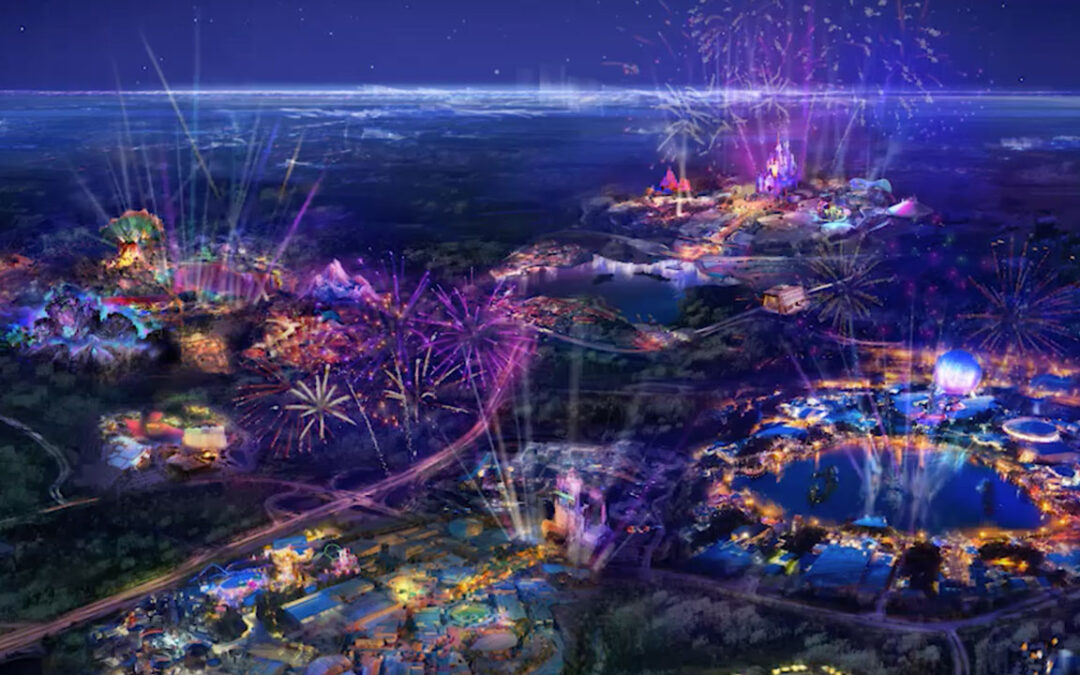

Walt Disney World has laid the foundation to build a fifth theme park. Well, the figurative foundation–not the literal one. That’s still at least a decade away–perhaps 20 years or more. This post covers the 2045 Comprehensive Plan that was approved by the Central Florida Tourism Oversight District, and why we still are convinced a 5th gate is still a mythical creature that’s unlikely to happen. Ever.
Fans have renewed hopes for a 5th gate last year based on this 2045 Comprehensive Plan, which arises out of the settlement of a lawsuit over the former Reedy Creek Improvement District. As a result, a joint development agreement was to be reached between the Central Florida Tourism Oversight District (CFTOD) and Walt Disney World. This meant that the 2032 Comprehensive Plan was deemed null and void, and that the prior 2020 Comprehensive Plan would remain in effect until a new plan had been approved.
Also as part of that settlement, the CFTOD agreed to consult with Walt Disney World while reviewing and amending the current plan and creating a new comprehensive plan. In other words, the new 2045 Comprehensive Plan is the result of a joint collaboration between Disney and CFTOD, not just randomly arrived-at judgments of the latter.
It’s worth noting that this same settlement commited the company to invest $17 billion in Walt Disney World over the next 10 to 20 years. Under the terms of the deal, Disney is required to invest at least $8 billion within the first 10 years of the agreement. So anyone who is skeptical that Disney’s expansion plans might be quietly cancelled…that’s unlikely.
In any case, the Central Florida Tourism Oversight District 2045 Comprehensive Plan has finally been approved, revealing specific details about the district’s plans for land use. If you’d like, you can read the full ~400 page document for yourself here (it starts on page 201). I don’t know why you’d want to, though.


In terms of basic background, the Central Florida Tourism Oversight District 2045 Comprehensive Plan is intended to provide the basis for future decisions regarding land use, development, conservation and infrastructure. It serves as the District’s official policy for the use of both private and public lands, as well as the Comprehensive Plan for the Cities of Bay Lake and Lake Buena Vista. The Plan provides a framework for expansion of the unique uses in the District, while managing growth, protecting the environment, ensuring health and safety, and enhancing the quality of development.
The CFTOD’s 2045 Comprehensive Plan continues the high standard of planning already undertaken and extends its purview ten years into the future. The Plan’s three overall functions are: 1) to govern the location and intensity of land use and development by providing the foundation for regulating proposed new projects; 2) to convey advance direction to the private sector by stating clearly the District’s expectations for growth and conservation; and 3) to guide public investment in new facilities, such as roads, water systems, and water quality facilities.
The district (first Reedy Creek and now CFTOD) has been doing modern versions of these plans since 1991. It began the process during the construction of the Disney-MGM Studios, realizing more cohesive master plans for comprehensive land use planning were needed. The 2045 Comprehensive Plan builds on the interim 2020 Plan, and reflects changes to the prior 2010 Comprehensive Plan. Suffice to say, it’s the most consequential permanent plan in a while.
Obviously, there’s a lot of ground covered in ~400 pages, and much of it concerns what Walt Disney World can build. This includes major expansions in office space–by over 1 million square feet, 1.7 million square feet of restaurant/retail space, and 53,076 hotel rooms (the changes to room key increases is perhaps the most fascinating aspect of the update, in that these limits might actually present a meaningful ceiling on growth).


In the 2045 Comprehensive Plan, the CFTOD has also approved a fifth major theme park at Walt Disney World. This is an increase in the allowed maximum from a 2010 plan, formalizing what was penciled into the 2020 plan. This 5th gate is approved beginning in 2035, and running through the conclusion of the plan in 2045.
The 2045 Comprehensive Plan views a major theme park as being on the scale of Magic Kingdom, EPCOT, Hollywood Studios or Animal Kingdom, with an estimated size of approximately 445 acres. There are currently 4 major theme parks at Walt Disney World (the ones listed above).
The technical definition of a major theme park per the plan is: “A theme park that is designed for multiple-day visits. The exhibitions and rides are extensive and normally require more than one day to experience.” (Not sure how Animal Kingdom meets this!) A new major theme park would have a daily population of 50,000 people (guests plus employees and others), which would put it above DHS or DAK.
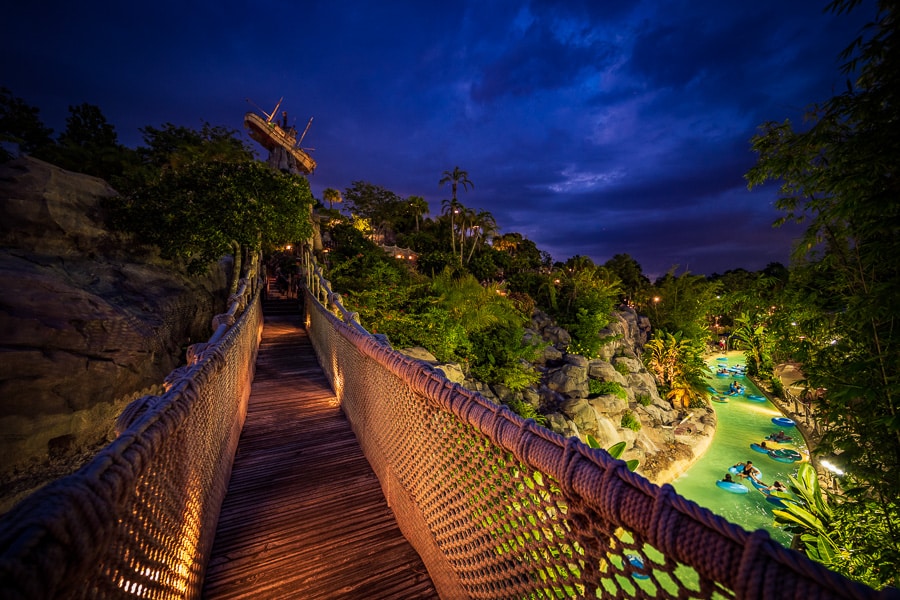

In addition to a single major theme park allocated in the comprehensive plan, the plan allows for two more minor theme parks. A minor theme park would be smaller or more niche experience, with a projected land area of around 147 acres. There are currently 3 minor theme parks at Walt Disney World: Typhoon Lagoon, Blizzard Beach, and ESPN Wide World of Sports.
The window for the first minor park opens in 2030, with a second minor park being on the table starting in 2040. Both options extend through the duration of the plan. Minor theme park is defined as: “A theme park that is designed for single-day or partial-day visits. Visitors are expected to spend shorter amounts of time than they would at a major theme park.” Curiously, a new minor theme park would have a population of 1,780 people, which is about half the population of the water parks (when open).
Perhaps what’s more interesting about these new major and minor parks is the redlines from a prior draft of the plan. Previous versions of the minor and major park were both smaller. Moreover, this expands what could be construed as a minor or major park to “expansion,” meaning a massive expansion plan could seemingly qualify as a new gate under the terms of the plan. Perhaps that’s how Walt Disney World will market Villains Land: “it’s basically a 5th gate within our 1st gate, if you don’t think about it too hard.”
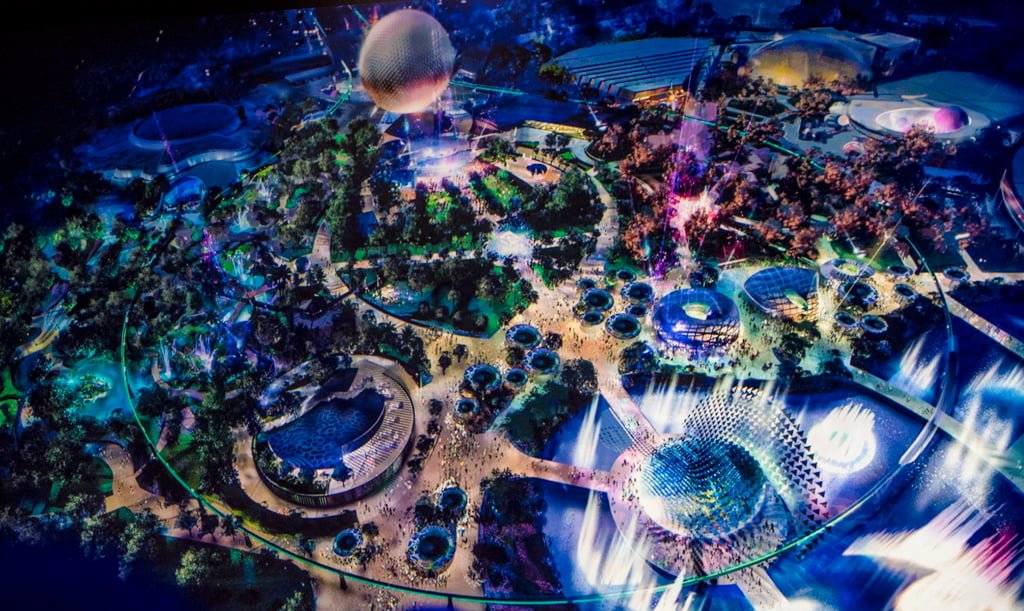

These new minor and major theme parks are not official projects–this should not be construed as a “leak” or “sneak peek” of what’s to come. To the contrary, the 2045 Comprehensive Plan specifically states that no plans for future theme parks are under review.
Essentially, what the 2045 Comprehensive Plan is accomplishing is laying the groundwork for new minor or major theme parks in its land use plan. Although Disney may not be considering such plans today, if the business environment changes in the future such that new parks are deemed necessary, they can be built without spending another half-decade on rewriting the rulebook (e.g. this plan).
One way or another, though, the CFTOD does expect Walt Disney World’s daytime visitor count to increase dramatically. Based on current attendance and occupancy numbers, the district estimates that the “functional” daytime population of Walt Disney World is between 205,000 and 307,000, whereas that number is expected to balloon to 335,000 to 475,000 by 2045–and the bulk of that growth will occur in the final 10 years of the plan (the 2035 range is 243,000 to 366,000). So someone believes that something big is on the horizon!


Again, we cannot underscore enough that Walt Disney World currently has no plans to construct a fifth major theme park or any minor theme parks, for that matter. None. Nada. Zero. Zip. Zilch. Keep in mind that this is the operation that wasn’t even opening the two existing water parks in its portfolio for 5 years! And the plan was to keep the seasonal rotation in 2025 until overwhelming demand during spring break forced Disney’s hand.
Fans are nevertheless excited, because surely this language was included purposefully because Walt Disney World is laying the groundwork to build a 5th gate in the next decade, right? We highly doubt it.
The agreement simply gives Disney the autonomy to build a 5th park–keeping its options open–without having to revisit the development agreement. Seriously, don’t read too much into this. It’s like how the land on your home might be zoned or conditionally approved for an ADU, even if you have no plans of building one.
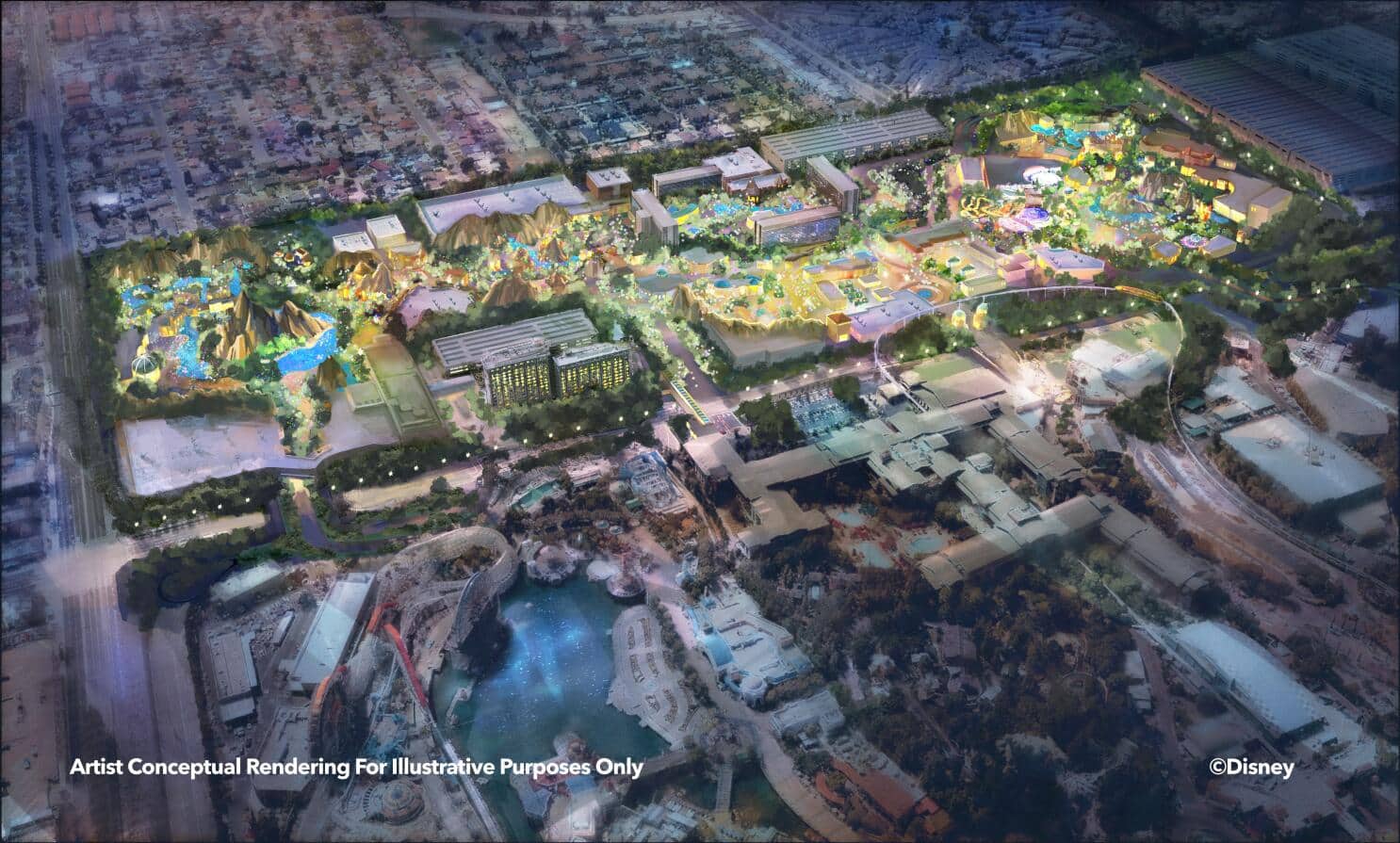

So why do this if there’s no appetite to build a 5th theme park? Probably because Disney has learned its lesson from its dealings with the government in both Florida, with the dismantling of the former Reedy Creek Improvement District, and in California with the City of Anaheim.
Actually, this is somewhat similar to the “pitch” for DisneylandForward, which showcased a ton of possibilities on large swaths of land beyond the existing theme park boundaries. Disney touted Fantasy Springs from Tokyo DisneySea and other envelope-pushing attractions they could build next to Pixar Place Hotel and on the Toy Story Parking lot.
Instead, we’re getting expansions and redevelopment that are largely within the existing footprint of the combined parks. The whole goal with DisneylandForward was to open the door so that Disney could do what they wanted without interference from Anaheim. The pitch was big and bold. The reality looks good, but doesn’t quite match that!


There are over a half-dozen compelling reasons why the company won’t build a fifth theme park at Walt Disney World. We’ve covered those in excruciating detail in Why a 5th Theme Park Will NOT Be Built at Disney World in the Next Decade. I guess we can now extend that to the next two decades, as this plan runs through 2045.
The only reason the title does not end with “In My Lifetime” is because I plan on living an obscenely long time–we’re talking mid triple digits–and it’s impossible to foresee what could happen once we hit Walt Disney World’s 100th Anniversary.
Not much has changed on that front, so rather than rehashing all of that, I’ll share some quick bullet points before adding new thoughts:
- Efficiency & Ease: Disney’s current focus is largely increasing utilization of the existing parks through redevelopment, not true expansion.
- Iger and D’Amaro Statements: The current and future CEO never tease a 5th gate, and always specifically say they want to expand the existing domestic parks.
- Too Expensive: Universal spent $7 Billion on Epic Universe with much of that pre-inflation. A fifth gate in 2035 on par with that would easily exceed $10 billion (adjusted for real and Imagineering inflation). Perhaps closer to $15 billion.
- Cannibalization: Decades after opening, Animal Kingdom still struggles to pull its own weight. A fifth park is likely to pull attendance away from existing gates.
- Average American Vacation: The average American’s vacation is between 4 and 6 days long, and that average has been on the decline for the last couple of decades; Central Florida doesn’t get enough international visitors to pick up the slack.
- Labor Pool: Staffing shortages are largely resolved in the parks, but it’s still not perfect. Central Florida has a tight labor market, with nearly two job openings for every unemployed person. As new construction keeps happening throughout the region and America’s population ages–without alternative labor sources–this is unlikely to change (barring massive productivity gains via automation).
- Infrastructure Costs: More cost-effective to expand (actually expand) the existing parks, which all have room to grow per the Comprehensive 2045 Plan. Theme parks require new toll plazas, ticket booths, turnstiles, backstage facilities, roads, transportation hubs, and other infrastructure that already exists in support of the existing theme parks. Infrastructure expenses are not insignificant, and it’s difficult to justify their expenditures when the existing parks can be built-out without incurring all of these same costs. Added infrastructure also compounds labor costs (see above).


Turning to new commentary, I’d also add that the jury is still out on the wisdom of Comcast building Epic Universe. Sure, fans love that Universal Orlando swung for the fences and bet big with Epic Universe. It’s a great park with great rides and bold ideas. It has its faults, sure, but none of this is really the point. By and large, it is a critical success.
Rather, it’s a question of whether spending $7 billion to build Epic Universe–plus probably another $2 billion to quickly expand its capacity in the next several years–was a smart business decision? Will the park be a commercial success? I’m sure Universal did all sorts of viability studies and has internal projections pre-2019 showing Epic Universe will generate boatloads of cash, increased occupancy and attendance, and so forth. But the thing about all of that is it’s theoretical and subject to change.
In actuality, the jury is still out on whether Epic Universe was the right play or whether Universal would’ve been better off building out Islands of Adventure and Universal Studios Florida. It’s easy to point to the triple-digit wait times and claim Epic Universe is a huge hit, but as covered in Epic Universe 2025 Crowd Calendar Predictions: High Crowds Despite Low Attendance, this is mostly a byproduct of capacity constraints.
Not only that, but just because a third gate (arguably) was the right move for Universal doesn’t mean the same would be true with a fifth gate at Walt Disney World. The former is trying to transform itself into a bona fide vacation destination that captures coveted hotel stays. The latter is the mature complex that already accomplishes that!


For the Walt Disney Company, there’s also the opportunity cost of building another theme park in Central Florida. If they’re going to build another gate, is that really the optimal location, or should that money be invested elsewhere?
One of the reasons some fans are holding out hope that a 5th gate is for real is because Disney surprised the world with the Disneyland Abu Dhabi announcement. The difference there is massive, though–Disney is spending $0 to build that new park in the United Arab Emirates. That park is a cash-positive licensing deal that helps fund investments at the other parks!
As long as we’re talking about a new theme park in the Middle East, we should consider other emerging growth opportunities where Disney could spend its own money to build new parks. Locations that come to mind include India, Vietnam, Indonesia, Brazil and maybe even Beijing. I would bet on new Disneylands in any of those places before a 5th gate at Walt Disney World. I would also bet on random places with a lot of money that give Disney sweetheart deals for reputational reasons, a la Abu Dhabi Disneyland.


Frankly, I’d also bet on a second gate at Shanghai Disneyland or third gate at Disneyland Paris happening before a 5th gate at Walt Disney World. Heck, for that matter, a 3rd gate at Disneyland Resort is significantly more likely, and I’d put the odds of even that happening at under 50/50 in my lifetime!
The point is that new parks in new markets make infinitely more sense than the company putting too many eggs in the Central Florida basket. Beyond that, the calculus also favors additional gates in existing markets to turn those into bona fide destination resorts–similar to the reasoning for Universal building Epic Universe.
In fact, if Disney is going to be “inspired” by anything that Universal is doing, it’s more likely to be the regional kids park in Texas or the year-round Halloween Horror Nights thing in Las Vegas. Although Disney was burned by the regional concepts before and I’m skeptical they can build anything cost-effectively enough for viability, that is still more likely than a 5th gate at Walt Disney World. Who knows–maybe if the Texas or Las Vegas concepts are smash successes (doubtful), Disney will take a hard look at replicating those results. Regardless, the look will be harder than the one at building a fifth theme park!
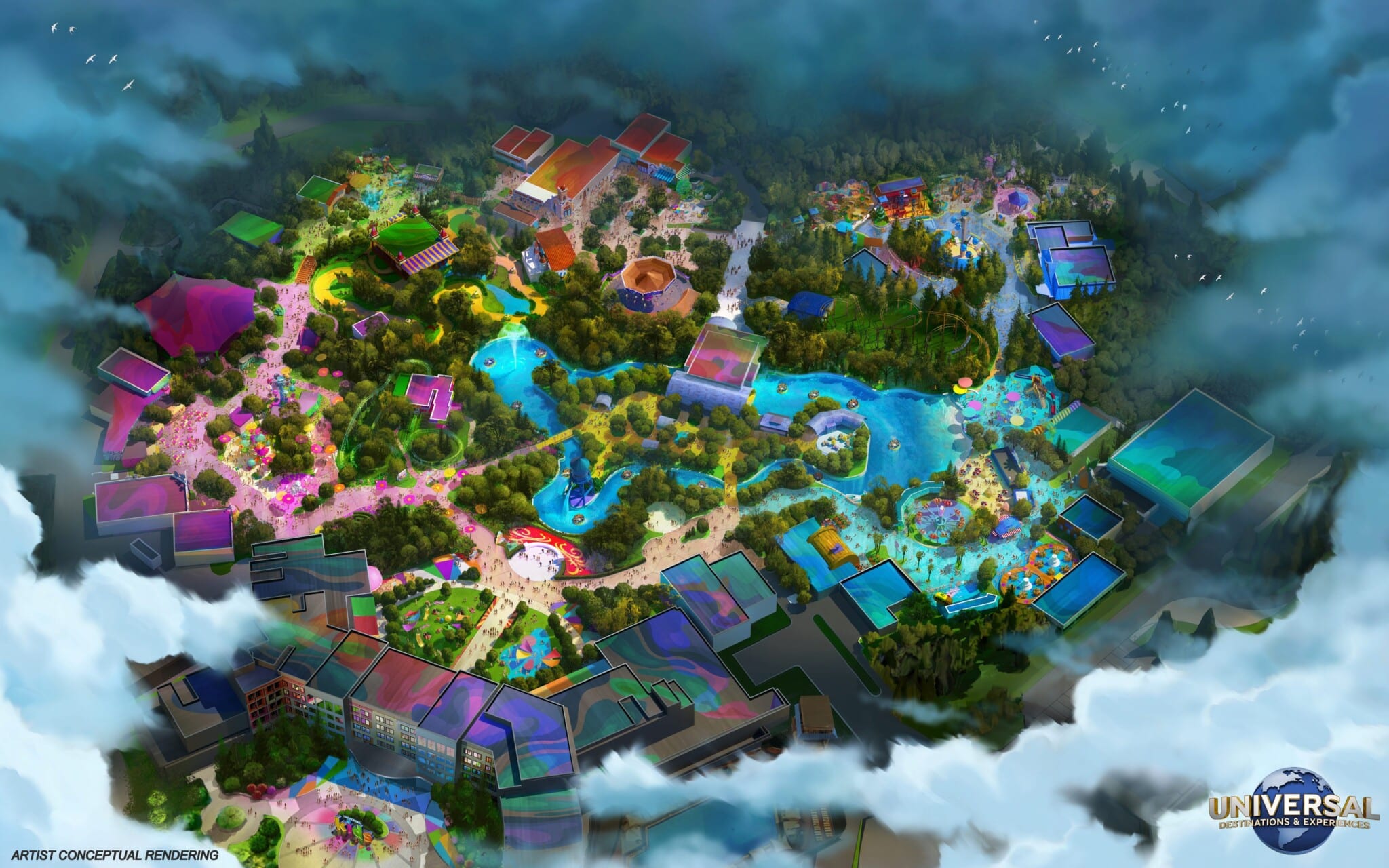

I’m not trying to be a party pooper or the bearer of bad news with all of this, but frankly, it is NOT bad news that Walt Disney World won’t get a fifth gate! Walt Disney World shouldn’t be thinking about another brand-new theme park anytime soon. There’s plenty of room to improve, expand, fix, etc. the existing gates.
Fans love the idea of a 5th theme park because it’s a blank slate, capable of holding a long wish list of rides and lands. Instead of getting 1-2 rides here or there, we get a half-dozen new lands. A brand new theme park is sexy and exciting because of the endless theoretical opportunities it presents. It’s fun to daydream about Florida DisneySea or whatever might be in your perfect park.
There are few feelings like stepping foot in a brand-new park for the first time–expansions absolutely do not hold a candle to that. I was reminded of this again with my first visit to Epic Universe. But I’m also a realist. It’s fun to dream, but the practical reality of a new theme park would not be perfect (just as Epic Universe presently isn’t perfect). At best, it would open incomplete.
If this fictional fifth gate at Walt Disney World were on par with Walt Disney Studios Park (Paris), Disney’s California Adventure, or Hong Kong Disneyland when any of those opened, the experience would be utterly underwhelming. Building Shanghai Disneyland…as it exists today…in Florida, USA…in the 2040s would cost at least $15 billion once all is said and done. Maybe more. Want Tokyo DisneySea? There’s no point in even talking about that. Not even OLC would build another Tokyo DisneySea in today’s world. There is absolutely no reason to believe Disney would.


As exciting as a fifth gate would be, it’s difficult to advocate for that when Animal Kingdom is still a half-day park and in need of close to a half-dozen more rides. When Disney’s Hollywood Studios needs more all-ages attractions so that its headliners don’t average 60+ minute waits and a large-scale replacement for the dead mall that is Animation Courtyard. When EPCOT, even post-overhaul, needs another new World Showcase pavilion, 3-4 rides, and reimaginings to a few rides at the front of the park.
Outside of the Dinoland plot, there’s a ton of unused or underutilized space in Animal Kingdom. That park already has great bones–now how about a couple of all-new (not replacement) lands–that turns it into a full day-plus park? There’s endless potential at EPCOT.
Backstage facilities could be relocated at Disney’s Hollywood Studios, allowing for the smallest park to become larger layout. Imagineering is plenty capable of dreaming up tens of billions of dollars of fantastic ideas for the existing 4 parks at Walt Disney World beyond everything that’s already been announced.


And those are just the things that really should be done at the existing parks. That list did not include expansion at Magic Kingdom, which “needs” the least help. There are a ton of discretionary projects that could happen at the existing gates to really improve them, and Villains Land is one of those.
Oh, and once Villains Land is done, its laydown yards will flip a lot of the land to the northwest of Magic Kingdom from “marginally unsuitable” to “marginally suitable” (see above). That land that could become future park expansion to build out Magic Kingdom even further. Or, more likely, an in-park hotel–that could account for a couple thousand of the “keys” approved in the 2045 Plan.
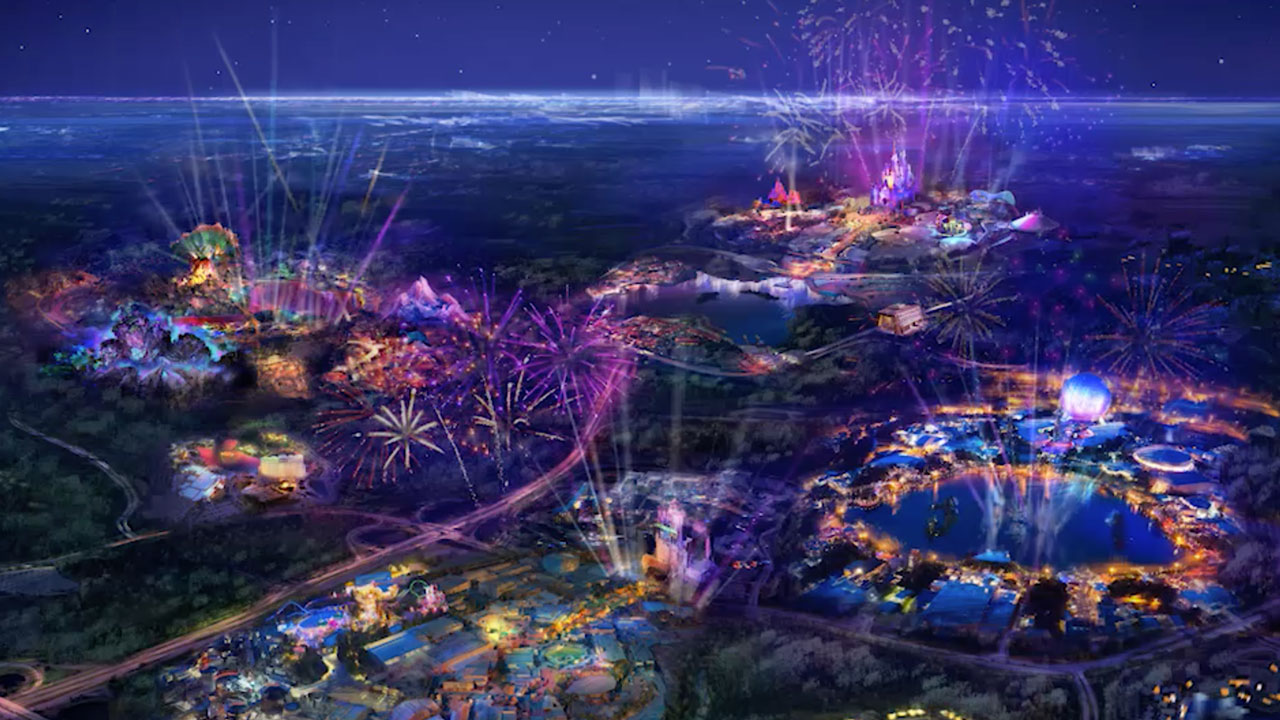

When you add the aforementioned infrastructure to the mix, the costs of constructing a new theme park would eat away multiple billions of dollars that could be spent on substantive additions instead. A lot of fans are upset about Walt Disney World’s approach to expanding within the berm in the next ~5 years, but it’s an incredibly efficient use of resources that should offer considerably more bang for buck.
While some of the choices being made as part of the current plans strike me as short-sighted, I’ll still take a maximization of the investment, and have that money allocated towards expanding the existing parks and reimagining rides that are currently underutilized or outdated.
I know that’s not the exciting choice and might be an unpopular opinion. But the alternative is the current 4 gates stagnating for decades to come–and that’s assuming a new gate would be properly built-out in the first place, and wouldn’t require another decade to fix or expand. I only plan on living until I’m ~150 years old, and I’m not sure if that’s enough time for Animal Kingdom to be properly built-out into a full-day park if Disney chases this fifth gate folly.
Planning a Walt Disney World trip? Learn about hotels on our Walt Disney World Hotels Reviews page. For where to eat, read our Walt Disney World Restaurant Reviews. To save money on tickets or determine which type to buy, read our Tips for Saving Money on Walt Disney World Tickets post. Our What to Pack for Disney Trips post takes a unique look at clever items to take. For what to do and when to do it, our Walt Disney World Ride Guides will help. For comprehensive advice, the best place to start is our Walt Disney World Trip Planning Guide for everything you need to know!
Your Thoughts
Do you think a fifth major theme park plus fourth & fifth minor parks are on the horizon at Walt Disney World before 2045? Would you like to see the company spend $10 to 15 billion to build a brand-new theme park, or would you prefer it spent on expanding the existing 4 parks (and keeping the lights on at both water parks)? Do you agree or disagree with our reasons as to why one is unlikely–or desirable–in the foreseeable future? Any other thoughts or commentary to add? Any questions we can help you answer? Hearing your feedback–even when you disagree with us–is both interesting to us and helpful to other readers, so please share your thoughts below in the comments!

